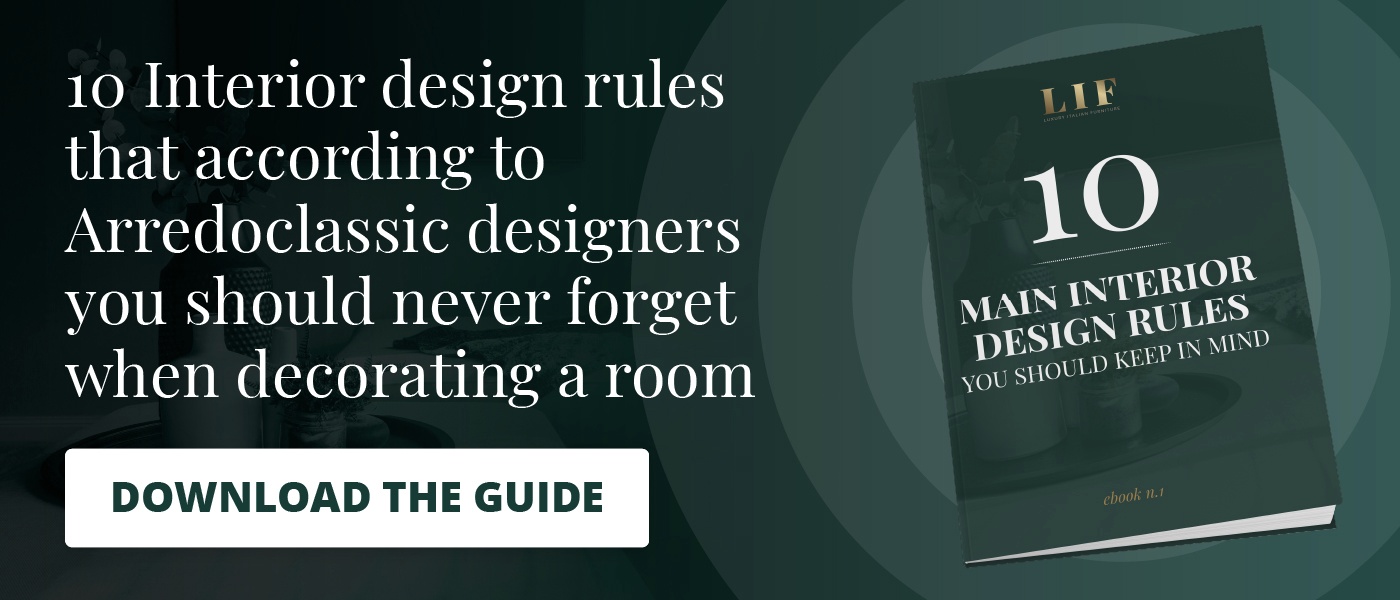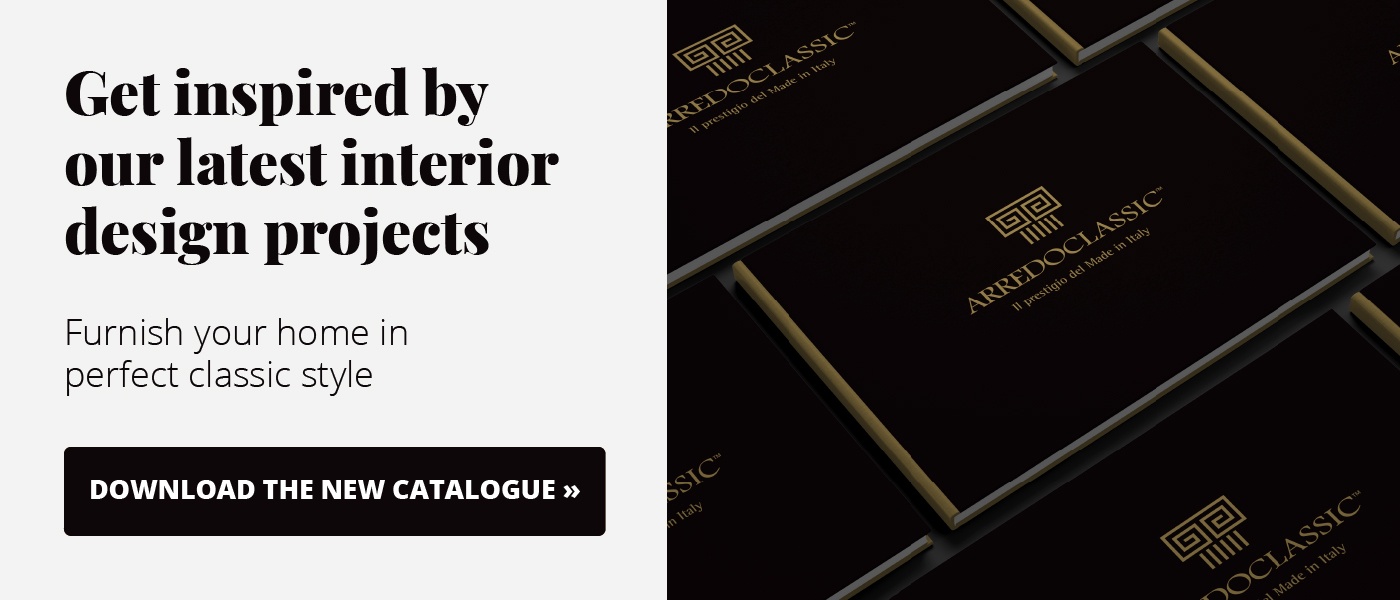When creating an interior design project, it is a good idea to take a number of steps to ensure that you have a clear idea, for instance, of the elements that should be present in the a room you wish to furnish.
The moodboard, created by means of a collage, is certainly one of the steps that allows you to visually represent all those factors and components that will add up and create the furnishing proposal.
The initial objective of a designer must be that of proposing an idea in keeping and consistent with the client’s desires and expectations and able to transmit that which is desired.
Throwing yourself into planning without having shared and approved a mood board is a risk that you must avoid, even if you are not professional designers. It is a really useful and functional tool to present ideas (furnishings and graphics) and provides a sort of conceptual map of all that the project could become once realised.
To better understand the importance of the moodboard, in this article, we will learn:
- What is a moodboard?
- Why it is important to make a moodboard
- How to create an interior design moodboard
- 7 Tips for creating a moodboard
1. Identify your customer and their style
2. Make more than one moodboard
3. Don't get emotionally attached to your moodboard
4. Define the format and layout of the moodboard
5. Gather visual material to create the moodboard
6 Choose your colour palette
7. Analyse the space available - Create a digital moodboard
- Actualize your projects with a moodboard
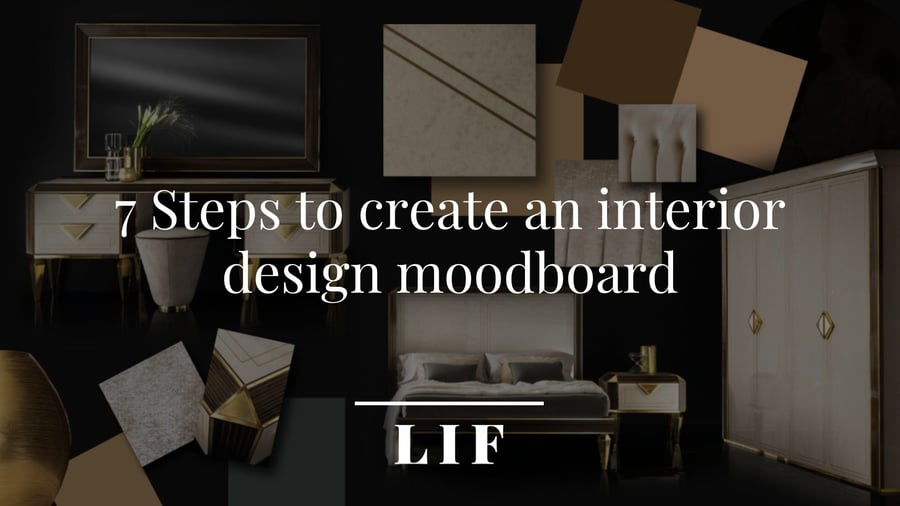
What is a moodboard?
A moodboard is a board full of cues and suggestions that allows you to visualise an idea as a whole.
It is a conceptual map made up of a collage with cuttings, writings, prototypes, material samples and colour palettes that can express the personality of the environment we are going to create.
A well-constructed moodboard, such as the one for the bedroom, makes it possible to create the most correct colour and material combinations, and then show them to your customer, who will then have an overview of the proposal.
It is not a product, but a tool with which you can communicate visual concepts and define the direction in which you wish to proceed. It demands time and work, generally significant, in researching all its constituent materials and covers plans, colour and fabric samples, types of furniture and furnishing accessories, shapes and decorative motives, all put together to provide a complete and emotive vision.
The moodboard not only offers guidelines for the designer, but also clarifies ideas for the customer, providing them with ideas and solutions to their precise requirements. Through it, the client will already perceive how the environment will be achieved.
This will avoid misunderstandings and doubts with the customer who will be involved in the creative process.
Why it is important to make a moodboard
The moodboard becomes a fundamental tool for identifying the style that the environment is to express.
Making one allows for a visual and tactile experience for the customer who will feel involved in the creation process. Touching one or the other type of material, , observing how a colour perfectly matches another one - these steps transform a person's shopping experience into something engaging and exciting.
Through the moodboard, the proposals that the interior designer will make to the client will be discussed immediately, gradually defining the identity of the environment being created in a clear and coherent manner.
The moodboard is also important in order to avoid mixing several styles that look good on paper but in reality turn out to be badly matched.
This type of preliminary tool in the realisation of the project allows you to go from the idea to the first implementation, thus verifying that everything imagined is really effective and valid.
Remember, the purpose of a moodboard is to:
- Involve
- Excite
- Communicate
- Inspire
This 'table of inspirations' is important because it both allows the atmosphere of the room to be communicated to the customer, and is a useful tool for the interior designer to check that everything works and is harmonious in the overall picture.
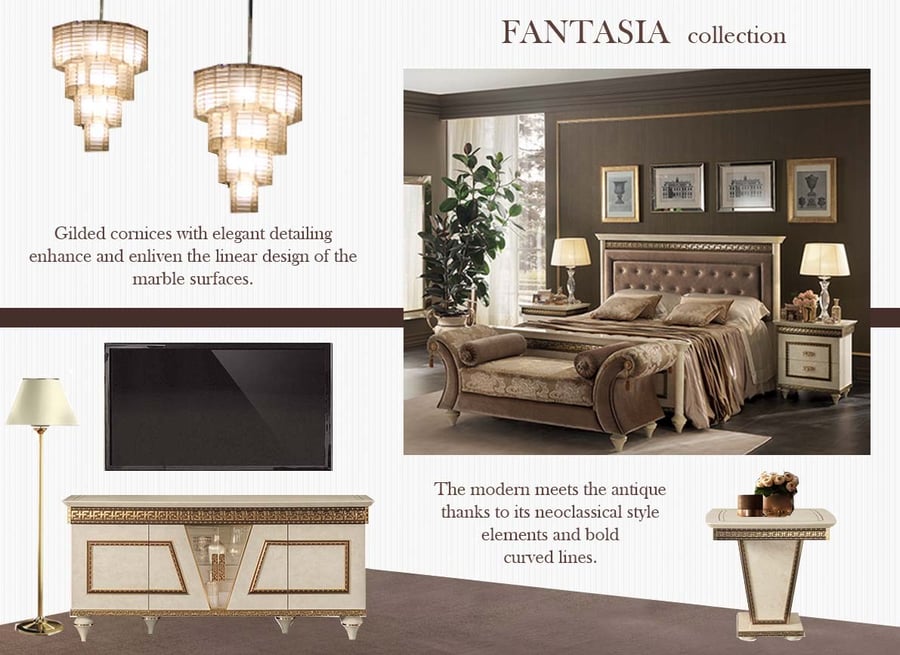
How to create an interior design moodboard
The moodboard does not come from a creative impetus, in the classic sense of an "epiphany" (the eureka moment). It does not come to light whilst walking on the beach or taking a soak in the bath. As we said above it is a long and demanding task that calls for visual intelligence and analysis.
The designer involved must seek a simplicity and clarity in order to communicate his or her ideas to the client. If you yourself wish to take on the creation of a moodboard you must aim to achieve the same for a single reason: to create a tool that can help during the design of the interiors of your home.
For this reason, and particularly for those who are not designers by profession, we propose a series of steps to follow to create the perfect interior design moodboard for your needs.
7 Tips for creating a moodboard
Before going into the specifics of how to create a moodboard for interior design, we suggest you to start by identifying the central idea behind which the entire project revolves.
You must always be clear about what you want to communicate, and in doing so, bear in mind that simplicity and clarity pay off, even at this preliminary stage.
If you have a functional idea, you don't need a lot of pictures, words or suggestions to communicate it. The moodboard will only help you make it 'cleaner', without unnecessary frills.
1. Identify your customer and their style
Who is the recipient of your message? If you are an interior designer, you should define your customer's taste and expectations; however, if you are making a moodboard for yourself, you should have your wishes and needs clearly in mind. At the end of the day, you are your own customer.
In the moodboard, you should include everything that inspires and stimulates you: from furniture to your hobbies, you will create a board that is aesthetically consistent and practical to use.
In this way, it will be an instrument capable of inspiring the viewer, speaking a simple, clear and emotional language.
2. Analyse the space available
In creating a moodboard, it will be essential to carefully analyse the space, both outside and inside the home. If you have to furnish a house by the sea, you will have a completely different ambience from a house in the mountains or in the city.
Having well in mind the type of space you are going to fill will also allow you to choose the most suitable and functional style for that particular environment.
Also, do not forget to take into account whether the room you are going to furnish already has furniture or is completely empty. If there is already furniture present that you do not want to remove, it would be best to start from that, to create a coherent environment in line with the style already present.
Always keep the size of the space in mind: take accurate measurements so that you can work out how many square metres you have available to fill, without forgetting that empty spaces play a key role, along with full ones, in the balance of a room.
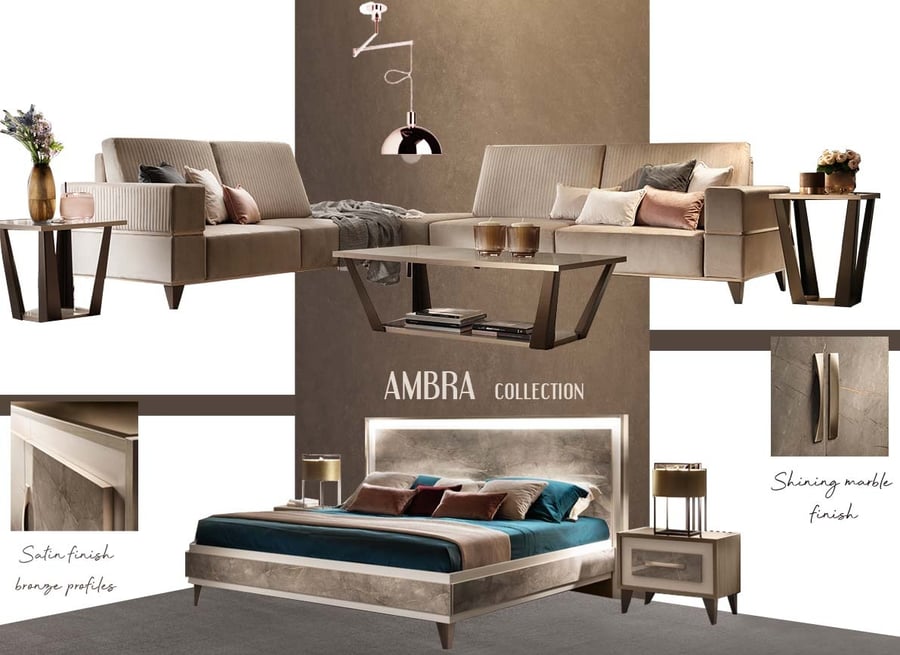
3. Choose your colour palette
Even before you go looking for the most suitable images according to the style you want to recreate, you should choose different shades of colour that will characterise first the moodboard, and then the room you are going to decorate.
Every element or material you are going to find must be available in the colours you have previously chosen.
Curtains, beds, sofas and cushions, furniture and accessories: colour will be the pivotal point with which you select all these elements, and it will be up to you to look for shades and colour samples that go well with each other, but can also offer a positively eclectic effect.
4.Gather visual material to create the moodboard
Now that you understand the space you have available and what you want to communicate, it is time to gather images that can best represent the message you want to convey to your future guests.
Images should express something that represents you and it is useful, in this case, to draw up a list of keywords under which to categorise the various images, thus also narrowing down the search field.
Don't just look for images on Google. Go further, by rummaging through books, old magazines, photos taken by you or someone else: every element of inspiration is important in creating the moodboard.
You should always keep your eyes open, because you never know where inspiration might come from. Therefore, you should stock up on visual material that you can to mix, select and exchange in order to create an ideal composition for your interior design project.
If you are an interior designer, take the time to find images that will arouse emotion in the customer and create an immediate connection with them.
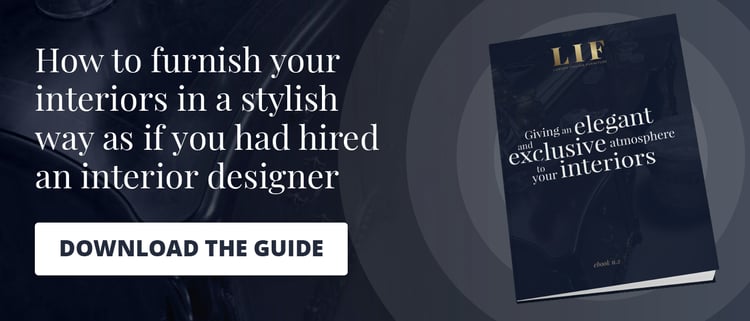
5. Define the format and layout of the moodboard
Now that you have all the material at your disposal, it is time to choose how you want your moodboard to look.
We are not just talking about creating a moodboard in digital or paper format, we are also talking about how to arrange the various elements on the board.
The composition may be:
- Linear and precise
- More precise and less linear
- More emotional
- In a state of organised chaos
Your experience and motivation will drive you to choose the most suitable composition.
If you also choose to use phrases or words, pay attention to the font, which must also be consistent and express the mood of the design.
6. Don't get emotionally attached to your moodboard
Emotionally attaching yourself to your 'creation' risks compromising its actual success and making you fail to notice that certain elements do not match.
Getting attached to a project under review is risky, because whatever changes you or a prospective customer decide to make, you will find it difficult to do.
If you are an interior designer, and one of your customers falls in love with a colour palette that you just don't like, don't go off the deep end. Instead, try to understand the motivation behind their request and make sure you suggest a compromise that keeps the whole project coherent.
7. Make more than one moodboard
We know that creating a moodboard is challenging and time-consuming work, but sometimes having more boards can help us better understand what we want and what kind of result we hope to achieve from the project.
If you are an interior designer, offering more options to a customer will allow them to find the one most akin to their ideas and will make you perceive yourself as a flexible professional who seeks as many solutions as possible to please the customer.
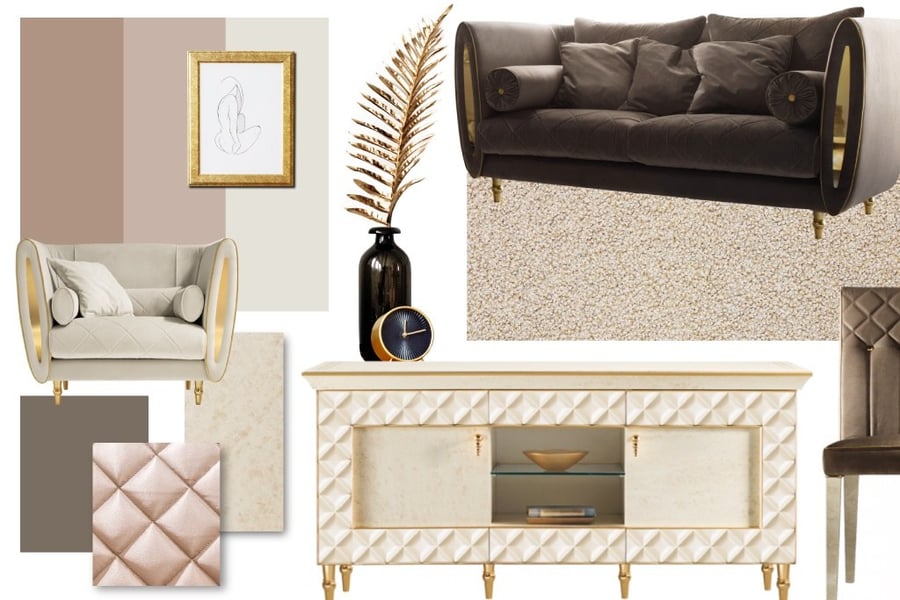
Create a digital moodboard
As we said, you can decide to create a tangible moodboard with cuttings and fabric samples that can also offer a tactile experience.
But with the tools now available online, you can also think about making your moodboard digitally.
Among the easiest and most immediate software you can use, there are:
For inspiration, on the other hand, we recommend using Pinterest which, with its pinboards, allows you to create inspiring collections.
Actualize your projects with a moodboard
You will have realised by now that a moodboard can make tangible the emotions and feelings you want to convey with your interior design project.
Thanks to an overview, you can perceive the colours, scents and textures of an environment that from an idea begins to take shape and consistency.
A moodboard is therefore a very valuable tool to start creating your interior design, exciting the client who will see their ideas, merged with yours, become reality.

